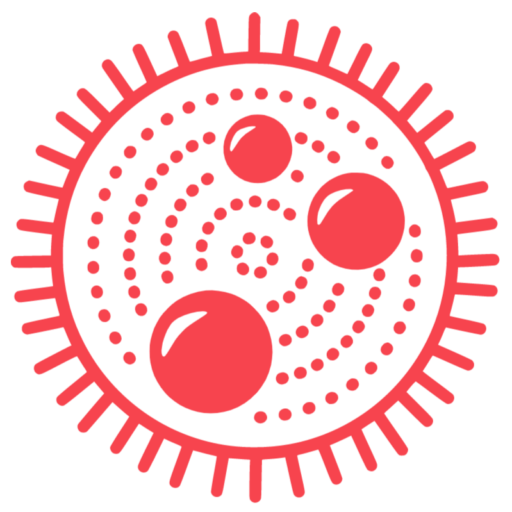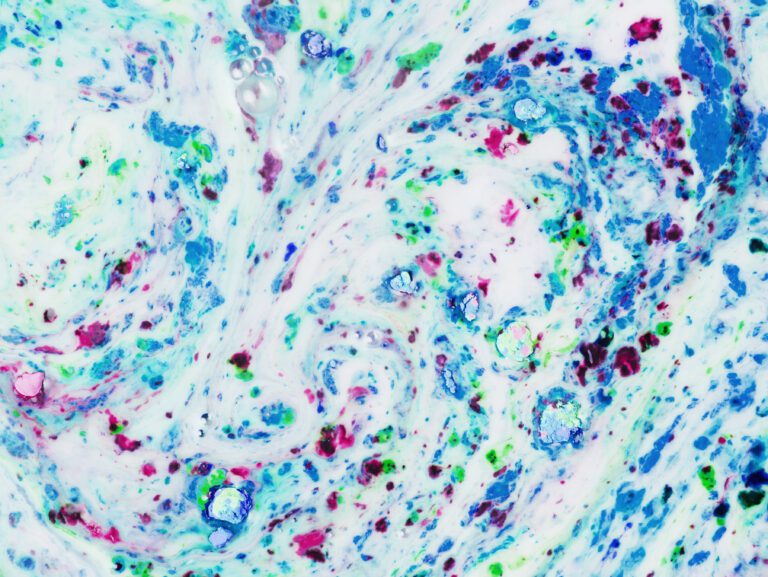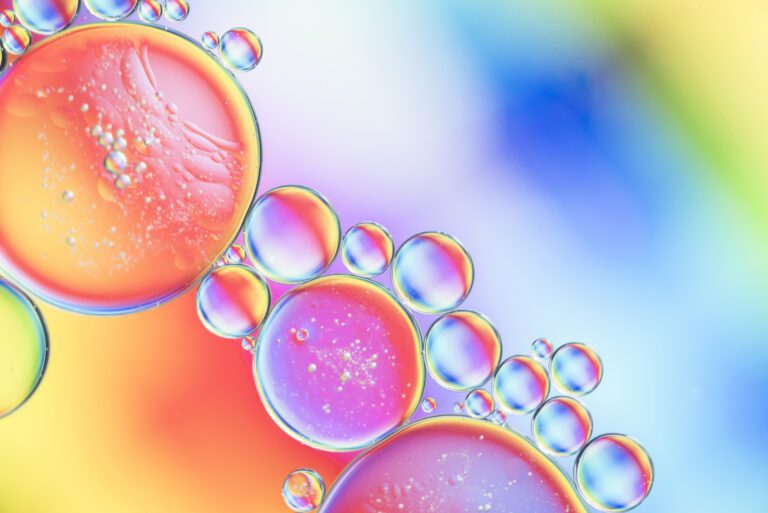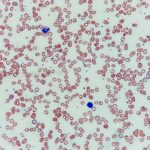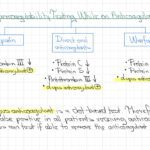
There are two types of primary hemoglobin disorders causing mycrocytic anemias including hemoglobinopathies and thalassemias. Hemoglobinopathies cause a “qualitative” defect in the normal hemoglobin structure. For example, a classic hemoglobinopathy is sickle cell disease in which a point mutation occurs in the ß-globin gene making the hemoglobin tetramers polymerize when deoxygenated. The result is a distortion of red blood cells (RBCs) into a sickle shape that can impede blood vessel flow. Therefore, this is a “qualitative” disorder.
In contrast, thalassemias are hemoglobin disorders in which mutations lead to a decreased production of globin chains. The hemoglobin molecule is mainly constituted of two parts: heme molecules that contain iron and bind to oxygen molecules and globins which are proteins that stabilize heme and allow the transport of oxygen inside hemoglobin. A simplified diagram of a hemoglobin molecule is shown below:

Our “Overview of Red Blood Cells” post describes the basic principles of hemoglobin structure and function. Please, check the following video for a short review of hemoglobin structure and function and the basic principles that will help us understand thalassemias better:
Definition of Thalassemias
Thalassemias are a group of red blood cell disorders in which a genetic mutation leads to abnormal production of hemoglobin (quantitative hemoglobin disorder). There are different types of thalassemias depending on the affected globin chain. It can be challenging to understand thalassemias as there are many confusing concepts. However, we will do our best to describe each one of them so that hopefully by the end of this post, you will understand thalassemias better.
Epidemiology of Thalassemias
Thalassemias are the second most common hemoglobinopathies (sickle cell disease is first). Approximately 80 million thalassemia carriers worldwide constitute about 1.5% of the population. Thalassemias are most prevalent in areas where malaria is or has been present including Asia, Africa, the Mediterranean, and other areas (although now the disease has spread out through the world due to migration). The epidemiology of thalassemias in the United States has not been defined clearly. Thalassemias are autosomal recessive disorders.
Classification of Thalassemias
Thalassemias are classified according to the affected globin chain. For example, if a mutation in the alpha globin gene causes decreased production of alpha globin, the disorder is called alpha thalassemia. Importantly, if one measures the quantity of alpha and globin chains in this example, alpha chains would be low and globin chains would be high. The next figure describes a classification of thalassemias:

Before reviewing each of the most relevant thalassemias, it is crucial to understand certain differences between the alpha and beta globin genes. There are 4 different alpha globin genes while there are only 2 beta globin genes. Alpha globin genes are located on chromosome 16 and beta globin genes are located on chromosome 11. Here is a short explanation that will hopefully help you remember these differences better:
Alpha Thalassemias
Alpha thalassemias occur due to deletional (90% of cases) and non-deletional mutations leading to deficient or absent alpha globins. The alpha-globin gene is located on chromosome 16. The degree of deficiency of alpha globins and how many alpha genes are affected determines the severity of the disorder. Alpha thalassemias are classififed into:
- Silent carrier (1 affected alpha-globin gene)
- Alpha thalassemia trait or minor (2 affected alpha-globin genes)
- Hemoglobin H disease (3 affected alpha-globin genes)
- Alpha thalassemia major or hemoglobin Bart’s (4 affected alpha-globin genes)
Before reviewing each of the different alpha thalassemia subtypes, please, consider watching this video that explains the topic in more detail the nomenclature of the genetic abnormalities found in alpha thalassemias:
Silent Carrier
- In a silent carrier of alpha thalassemia, there is only 1 out of the 4 alpha-globin genes affected.
- The nomenclature of the mutation status depends on which of the 4 genes are missing. For example, we may have descriptions such as -a/aa, a-/aa, aa/-a, aa/a-.
- Asymptomatic or “silent.”
- Laboratory workup: no anemia, may have a low MCV, normal hemoglobin electrophoresis, and high-performance liquid chromatography (HPLC).
- Confirmation is obtained by molecular studies (deletion).
Alpha Thalassemia Trait (Minor)
- Two alpha genes are abnormal and two are functional.
- Leads to mild microcytic anemia usually with MCV <78.
- Laboratory workup is similar to silent carrier except that mild anemia can occur.
- Diagnosis is also obtained only by molecular studies (hemoglobin electrophoresis and HPLC are normal).
Hemoglobin H Disease
- 3 out of the 4 alpha-globin genes are mutated.
- Since there are very few alpha globins, beta and gamma globins increase and polymerize.
- The combination of beta globins leads to the formation of hemoglobin H (beta x4).
- The combination of gamma globins leads to the formation of hemoglobin Bart’s (gamma x4).
- Both hemoglobin H and Bart’s have a high affinity to oxygen leading to difficulties with oxygen delivery to the tissues.
- Both hemoglobin H and Bart’s are prone to oxidation and precipitate in the red blood cells causing their destruction in the spleen (hemolysis).
- Ineffective hematopoiesis occurs as well due to the significant lack of alpha globin chains.
- Clinical features: Profound microcytic hemolytic anemia, splenomegaly, iron overload, and bone deformities due to bone marrow expansion. Patients may require blood transfusions.
- Diagnosis: Anemia (hemoglobin usually between 7/11 g/dL), MCV 50-60 fl, red blood cell inclusions on a smear (brilliant cresyl blue stain), abnormal hemoglobin electrophoresis and HPLC (fast moving peak), and molecular studies.
Alpha Thalassemia Major or Hemoglobin Bart’s
- There are 4 mutated alpha globin genes (–/–).
- The complete absence of alpha-globin production results in the formation of gamma-globin tetramers (γ4), known as Hemoglobin Bart’s (Hb Bart’s). Hb Bart’s has an exceptionally high affinity for oxygen, making it ineffective for oxygen delivery to tissues.
- Clinical Features: This is the most severe form of alpha thalassemia. It leads to severe intrauterine anemia, heart failure (compensatory mechanism to severe anemia and tissue hypoxia), and typically fetal demise or death shortly after birth. Unfortunately, this condition is fatal without intervention.
- Most common in Southeast Asia, China, Greece, Turkey and Cyprus.
- Genetic counseling and testing for at-risk couples is essential since recognition before pregnancy is essential. Without management, this condition is fatal.
- Management: Focused on pre-natal screening and detection. If the disease is detected in the prenatal period, management includes intrauterine blood transfusions and curative stem cell transplantation after birth.
Importantly, there are some mutations that although do not lead to the absence of a globin gene, they can affect the alpha globin molecule causing a disease similar to the described thalassemias. An example is Hb Constant Spring (αCSα) in which a mutation that extends the alpha-globin chain, leading to unstable hemoglobin and symptoms similar to HbH disease when combined with other alpha-thalassemia mutations.
Beta Thalassemias
Beta thalassemias are also inherited red blood cell disorders caused by mutations in the beta-globin gene located on chromosome 11. These mutations result in reduced or absent production of beta-globin chains, which are a crucial component of adult hemoglobin (HbA). Similar to alpha thalassemias, the severity of beta thalassemias depends on the nature of the mutations and the degree of decreased beta-globin production and function. There are more than 300 mutations identified that cause beta thalassemias. The nomenclature of the genetic abnormalities is easier to understand than alpha thalassemias and is described below:
- β⁰ = no β globin production.
- β⁺ = reduced β globin production.
Interestingly, since beta globin production starts at birth and is significant at around 6 months of age, the severe forms of beta thalassemia tend to express clinically after 6 months of age.
Beta Thalassemia Minor
- One mutated beta-globin gene, resulting in reduced production of beta-globin (heterozygous state). This results in one normal beta-globin gene and one mutated gene.
- Genotypes: include β0/β, β+/β, or mild β+/β.
- Clinical Features: Mild anemia (Hg 10-13 g/dL) with MCV 60s, hypochromic RBCs. Hemoglobin electrophoresis shows HbA present, and high HbA2 (> 3.5%) due to the decrease in beta chains.
- Management: Typically requires no treatment. Iron supplementation is avoided unless iron deficiency is confirmed. Partner testing and counseling is recommended.
Beta Thalassemia Intermedia
- Two mutated beta-globin genes, but some beta-globin production remains (mild to moderate mutations or a combination of severe and mild mutations). There are many possible genotype combinations.
- Clinical Features: Moderate anemia but usually not transfusion-dependent (NTDT), splenomegaly, jaundice, cholelithiasis, bone deformities, and growth delays.
- Other Complications: Osteoporosis, hypercoagulability and thrombosis, pulmonary hypertension (PHT), cerebrovascular disease, leg ulcers, extramedullary hematopoiesis (EMH), hepatosplenomegaly, paraspinal masses, Hepatocellular carcinoma, renal abnormalities, and iron overload, even without regular transfusions due to downregulation of hepcidin. Presents later in childhood.
- Splenectomy increases the risk of most of these complications and should be avoided as much as possible.
- Management: Management may include occasional blood transfusions, especially during stress, illness, or pregnancy. Monitoring and managing iron levels are important to prevent iron overload. Splenectomy (surgical removal of the spleen) may be considered in cases of severe splenomegaly.
Beta Thalassemia Major (Cooley’s Anemia)
- Beta Thalassemia Major (Cooley’s Anemia)
- Genetic Mutation: Involves two severely mutated or absent beta-globin genes (homozygous or compound heterozygous state), resulting in little to no beta-globin production.
- Description: The most severe form of beta-thalassemia. Affected individuals are usually diagnosed within the first two years of life due to severe anemia and other symptoms.
- Clinical Features: Severe anemia requiring regular blood transfusions, jaundice, splenomegaly, skeletal deformities (particularly in the face and long bones due to bone marrow expansion), delayed growth and development, and increased risk of infections. Without regular transfusions and medical management, it can lead to life-threatening complications.
- Management: Regular blood transfusions are necessary to maintain hemoglobin levels and prevent severe anemia. Iron chelation therapy is required to manage iron overload resulting from frequent transfusions. Bone marrow transplantation (hematopoietic stem cell transplantation) may offer a potential cure for some patients.
We have described the most common and relevant thalassemias in this post. We will discuss most of these conditions separately and in detail in the future including the management of thalassemias.
We hope you enjoyed this post! Please, leave us any comments or questions below. Rate our post using the star system below if your time allows. Thank you for reading!
